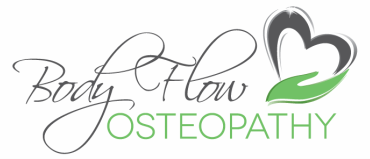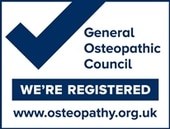What to expect from your taping
If you have had a taping from us as part of your treatment plan, here's some general advise and tip about how best to look after your taping:
1. The tape is fully waterproof so you can bath or shower with it as your normally would. However, be careful with drying: path dry the area rather than rubbing over the taping.
2. Allergic Skin reactions are very rare but they can happen. If you notice any redness or persistent itching remove the tape straight away.
3. The tape has a very strong adhesive so be careful when you take it off: remove it SLOWLY (it's not a waxing strip!). Try taking it off from either end - there is often one side that is more comfortable than the other, although there is no logical reason for this.
4. To make removal easier you can dab a little oil on the tape a few minutes before removing.
5. To make the taping last longer, avoid applying anything oily in the area (i.e.: creams, body oil, etc.)
6. Aim to keep the tape on for 7-10 days unless advised otherwise. Your skin type will affect how well (or not) the tape lasts so no worries if it comes off earlier.
7. If the tape starts peeling off or fraying at the ends simply trim it with scissors (carefully!) or ask someone else to do it.
Here's a bit more information about the tape and the answers to commonly asked questions:
Q. What is the tape made of?
A. We use Flexotape which is Latex Free, made with 100% high quality cotton and therefore breathable and also water resistant. The tape should be very comfortable to wear.
Q. Is the tape medicated?
A. No - the pain relieving effect of the tape comes from shifting the course of the fascia (the connective tissue layer between the skin and the muscle). Recent fascia research clearly shows that the fascia plays a much more important role than we used to think in pain and postural problems.
Q. How does it work?
A. The common miss-conception is that the tape supports the joints or muscles but that's not the case.
The physiological effects of Myofascial taping are achieved by creating an intensive myofascial release, myofascial activation and correction of the fascia course.
Muscles, tendon and pain receptors are off loaded and the normal muscle function is restored. For the client, the most valuable effect is the reliable (and often significant) pain relief from muscular and myofascial pain.
I trust this little guide has been useful but if you have any questions or any problems, please feel free to contact us!
Body Flow Osteopathy - Norwich Waterloo Road
01603 327223
[email protected]
1. The tape is fully waterproof so you can bath or shower with it as your normally would. However, be careful with drying: path dry the area rather than rubbing over the taping.
2. Allergic Skin reactions are very rare but they can happen. If you notice any redness or persistent itching remove the tape straight away.
3. The tape has a very strong adhesive so be careful when you take it off: remove it SLOWLY (it's not a waxing strip!). Try taking it off from either end - there is often one side that is more comfortable than the other, although there is no logical reason for this.
4. To make removal easier you can dab a little oil on the tape a few minutes before removing.
5. To make the taping last longer, avoid applying anything oily in the area (i.e.: creams, body oil, etc.)
6. Aim to keep the tape on for 7-10 days unless advised otherwise. Your skin type will affect how well (or not) the tape lasts so no worries if it comes off earlier.
7. If the tape starts peeling off or fraying at the ends simply trim it with scissors (carefully!) or ask someone else to do it.
Here's a bit more information about the tape and the answers to commonly asked questions:
Q. What is the tape made of?
A. We use Flexotape which is Latex Free, made with 100% high quality cotton and therefore breathable and also water resistant. The tape should be very comfortable to wear.
Q. Is the tape medicated?
A. No - the pain relieving effect of the tape comes from shifting the course of the fascia (the connective tissue layer between the skin and the muscle). Recent fascia research clearly shows that the fascia plays a much more important role than we used to think in pain and postural problems.
Q. How does it work?
A. The common miss-conception is that the tape supports the joints or muscles but that's not the case.
The physiological effects of Myofascial taping are achieved by creating an intensive myofascial release, myofascial activation and correction of the fascia course.
Muscles, tendon and pain receptors are off loaded and the normal muscle function is restored. For the client, the most valuable effect is the reliable (and often significant) pain relief from muscular and myofascial pain.
I trust this little guide has been useful but if you have any questions or any problems, please feel free to contact us!
Body Flow Osteopathy - Norwich Waterloo Road
01603 327223
[email protected]



